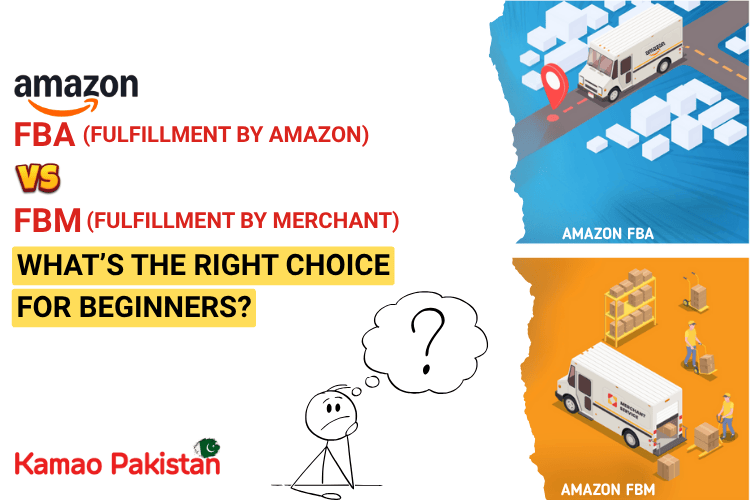If you’re thinking about selling on Amazon, one of the first decisions you’ll need to make is how to fulfill your orders. The two main options are FBA (Fulfillment by Amazon) and FBM (Fulfillment by Merchant).
Both come with unique advantages—this guide helps you decide which model suits your goals, resources, and comfort level.
What Is Amazon FBA?
Fulfilled by Amazon means you send your products to Amazon’s warehouse, and they handle storage, packing, shipping, and even customer service.
Highlights:
- Storing your inventory
- Packing and shipping orders
- Handling customer service and returns
Pros of FBA:
- Prime badge access (boosts trust and conversions)
- Fast, reliable shipping via Amazon
- No need to manage your own warehouse or packing
- Better chances to win the Buy Box
Cons of FBA:
- Fulfillment and storage fees can add up
- Less control over packaging and delivery
- Inventory limits may apply for new sellers
- Returns and refunds are handled by Amazon (sometimes in favor of customers)
What Is Amazon FBM?
Fulfilled by Merchant means you list products on Amazon, but YOU handle shipping and customer service either yourself or via a third-party logistics provider.
Highlights:
- Full control over order handling
- Lower fees compared to FBA
- Ideal for custom or low-turnover products
Pros of FBM:
- Lower fees, especially if you handle fulfillment yourself
- More control over shipping, packaging, and branding
- No need to send inventory to Amazon
- Useful for large or slow-moving items
Cons of FBM:
- No automatic access to Prime badge
- You handle all customer service, shipping, and returns
- Slower shipping may hurt sales
- Harder to win the Buy Box compared to FBA sellers
Which One Is Better for Beginners?
Go with FBA if:
- You want a hands-off, scalable system
- You want access to Amazon Prime customers
- You sell fast-moving, small to medium-sized products
- You prefer to focus on marketing instead of logistics
Go with FBM if:
- You prefer full control and lower starting costs
- Your products are bulky, customized, or handmade
- You’re experimenting and testing niches with small inventory
- You have access to cheap local shipping
📦 Hybrid Approach: Best of Both Worlds?
Many successful sellers use both FBA and FBM depending on the product type.
For example:
- Use FBA for best-sellers with consistent volume
- Use FBM for oversized or seasonal items
- Use FBM to test a product before sending it to FBA
This hybrid model gives you flexibility and helps reduce risk.
✍️ Final Words
Both FBA and FBM can lead to success on Amazon—it depends on your business style, product type, and growth vision. Understanding how each works gives you the freedom to choose wisely or even combine them later.

